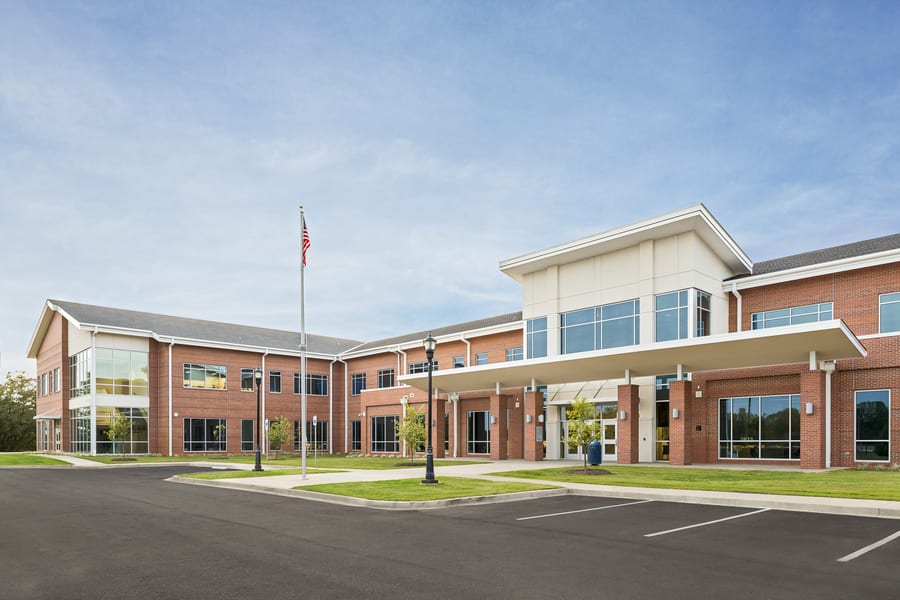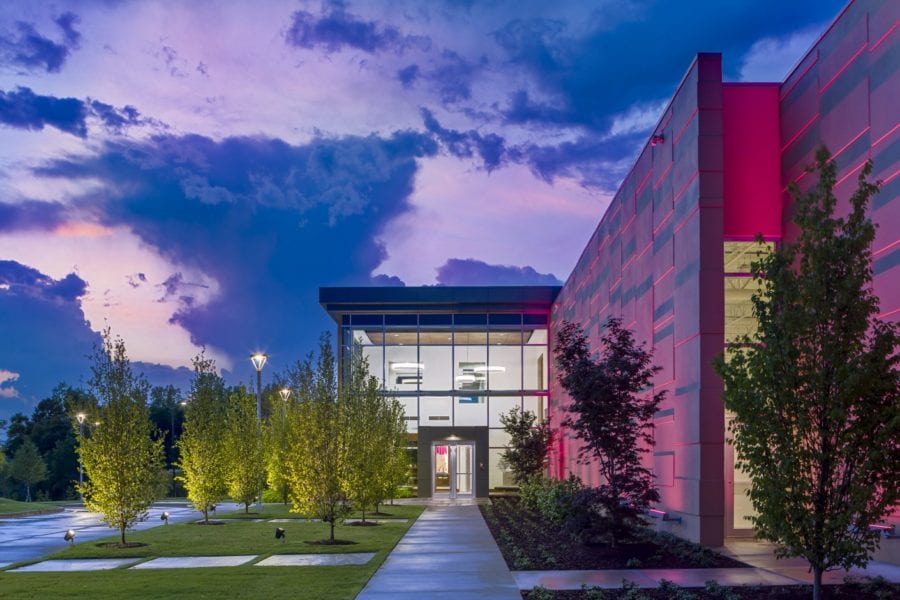Greenville Humane Society (Photo: Harper General Contractors/Firewater Photography)
Timothy Lewis, senior project manager at Harper General Contractors, noticed a surprising trend in his Procore data stream in late spring. Employees and partners were greatly increasing their Procore utilization.
Having considered all the factors behind the increase, Lewis realized that despite the coronavirus-related challenges thrown at the workforce, people were still getting the job done, and Procore was figuring heavily in that result.
“We saw a record-breaking usage trend in Procore from September 2019 through April 2020 that we had never seen before,” Lewis says. “And, what that really said to me was, whether or not COVID was happening, we were continuing to work off what we had on contract.”
Procore allows Harper the flexibility to “continue business as usual, whether or not we’re sitting in an office.”
What that signifies to Lewis is that having Procore allows Harper the flexibility to “continue business as usual, whether or not we’re sitting in an office.”
Regional Focus
The 70-year-old company began in a small hardware store in Williamston, South Carolina. However, today Harper is ranked as one of the nation’s top 400 general contractors with six offices located throughout South and North Carolina.

Photo: Harper General Contractors/ Firewater Photography
Harper serves the education, water, industrial, municipal, healthcare, community and commercial markets and specializes in alternative delivery, like construction manager at-risk and design-build. Additionally, Harper offers services in preconstruction, building information modeling (BIM), maintenance/emergency response, sustainable construction, and tilt-up construction.
The Procore Connection
Harper’s journey with Procore started five years ago. The management has always been adamant about leveraging the software to its max. Lewis and Anne-Marie Moehring spearheaded the implementation with the idea of “staying out of the silos.”
“You roll out new software and need to do an entirely new implementation,” Lewis explains. “So staying inside the tool has been one of our core components for using Procore. We use it as much as humanly possible.”
To achieve that, the company focused on training internal and external stakeholders to use the software. Once everybody had the basics, the other key initiative was to reinforce that training. The mantra “if they don’t know this time, make sure they do the next time,” is now part of the company culture.
For example, if someone uses the wrong submittal process, a phone call will walk the person through the correct process. Lewis credits this approach to eliminating cycles of document submissions and rejections so common in construction.
Weathering COVID-19
During the pandemic, Harper has leveraged Procore to keep communications flowing and manage special aspects of day-to-day life. The company relies on Procore’s cloud and their own mobile devices to keep operations running seamlessly.
“Procore allows you the flexibility because it’s always on,” Lewis says. “You don’t need to wait for it to shut down and restart for maintenance. At some companies, their IT people are shutting down the system every weekend to install updates and maintain it. It’s a huge benefit having a tool that’s always on.”
Harper also uses Procore for its COVID-19 response by creating inspections and checklists for triage and budget. There is an inspection form to help the company manage the human risks the disease brings to the job; it allows the company to record all the necessary information in the event of exposures. That also helps inform how the company manages interactions among the workforce to minimize potential exposures.
Harper created budget line items for extra responsibilities arising from the coronavirus like more job site cleaning during and after a job. The company also increased scrutiny on work groupings to account for social distancing and task efficiency.
Mask Solution
Lewis recognized early on how difficult it would be for people to wear surgical-type masks while working, not to mention how many would feel about wearing them in the first place.
“Construction workers are very proud people, right? If you get a white surgical mask and say they have to wear it all day long in 100 degrees, what are they going to do?” Lewis asks. “Probably take it off or tuck it under their chin because they don’t have any good options there.”
Lewis also noticed that crews on one job were already using fishing buffs for sun protection, so he had some full neck gaiters made with Harper’s brand on them and handed those out. People got the sun protection they needed. Whenever covering their faces was required, they could simply pull up the front of the gaiter.

Photo: Harper General Contractors/ Firewater Photography
Harper realized that keeping people healthy required changing routine practices. If multiple trade contractors used the same portable toilets, it could lead to exposures across the trades and the site. The solution was to provide locking toilets and washing stations for each trade contractor.
Harper also changed the focus of meetings to keep more of them outside and limited how many people could attend meetings indoors. Meetings became chairless so people could maintain distancing and reduce touchpoints.
Like so many other businesses, Harper continues exploring new ways of doing business while facing today’s challenges.
“Let’s try to think of different ways to be safe,” said Lewis, “but also be productive so we can balance the economic and health hazards.”
Leave a Reply